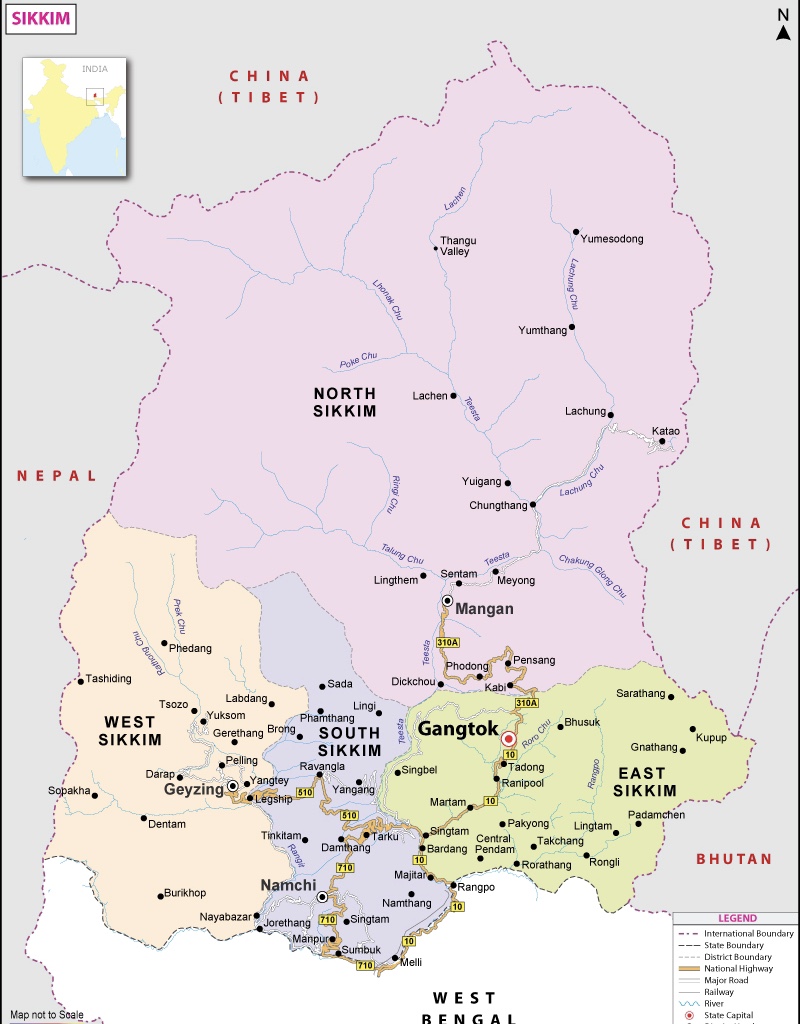Important Facts For Prelims
Statehood Day of Sikkim
- 18 May 2020
- 2 min read
Why in News
On the Statehood Day of Sikkim (16th May), the Prime Minister greeted the people of the state and praised the traditions and culture of the state highlighting its contributions to the national progress.
Key Points
- Sikkim is located in the northeastern part of the country, in the eastern Himalayas and is one of the smallest states in India.
- It derives its name from the Limbu (a tribe) words su him, meaning ‘new house’.
- Capital: Gangtok.
- Borders:
- Tibet Autonomous Region of China to the north and northeast, Bhutan to the southeast, Indian state of West Bengal to the south and Nepal to the west.
- Sikkim is of great political and strategic importance for India because of its location along several international boundaries.
- History:
- Sikkim became a protectorate of India in 1950 following the Indo-Sikkimese Treaty, with India assuming responsibility for the external relations, defense and strategic communications of Sikkim.
- Sikkim became the 22nd state of India on 16th May 1975, following a statehood demand from the political leaders.
- The Namgyal dynasty ruled Sikkim until 1975.
- Geography:
- Mount Kanchenjunga, India’s highest peak and the world’s third highest mountain lies in Sikkim.
- The Kanchenjunga National Park (KNP) (established in 1977), near the peak is among the largest of India’s high-elevation conservation areas.
- KNP was designated a World Heritage Site in 2016 under the ‘mixed’ category (sites containing elements of both natural and cultural significance).
- Sikkim is drained by the Teesta river and its tributaries such as the Rangit, Lhonak, Talung and Lachung.
- Teesta river water conflict is one of the most contentious issues between India and Bangladesh.
- Teesta river is a tributary of Brahmaputra river.
- Mount Kanchenjunga, India’s highest peak and the world’s third highest mountain lies in Sikkim.







